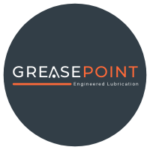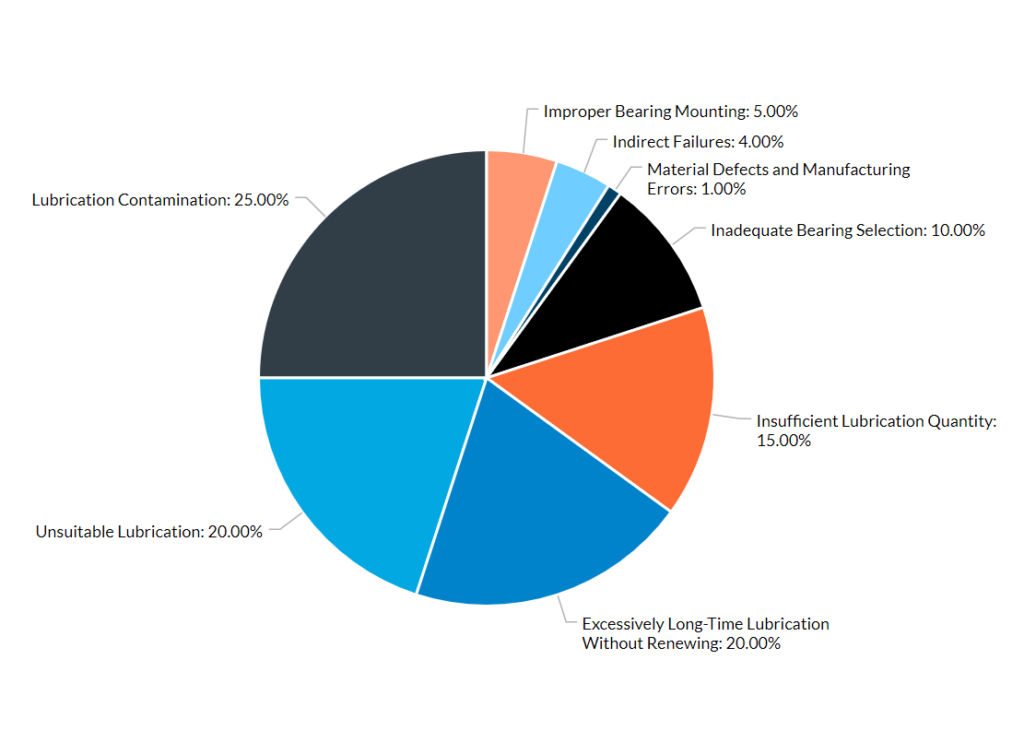- info@pennair.com
- 888-631-7638
- Service Counter: 717-840-1600

With 50 years of experience, GreasePoint exists to deliver custom engineered lubrication systems to the transportation and manufacturing industries.
May 20, 2021 // 1 minute read

Lubrication reduces friction and allows moving machine parts to slide smoothly past each other. Often, lubrication points are difficult to reach, over/under greased, or forgotten about entirely. Fact is, lubrication is used for 90% of all rolling and rotating parts.
Bearings and their housings should be filled from 30% – 60% of their total capacity. When determining what percentage the bearing should be filled, consider:
In industrial applications, oil lubrication is used if adjacent machine components are supplied with oil as well, or if generated heat must be dissipated by the lubricant. The heat dissipation is necessary if high rotating speeds and/or high loads are involved or if the bearing is exposed to high temperatures.
The evolution of tribology (the study of friction, wear, lubrication, and the design of bearings) has led to a remarkable increase of knowledge describing why bearing failures occur. The data from the graph below shows that improper lubrication is the most commonly cited cause of bearing failure and accounts for approximately 80% of breakdowns.
Considering the facts mentioned above, the most common cause of bearing failure is lubrication; whether it is poor lubricant selection, poor application, lubricant contamination or lubricant degradation. It should be understood that proper and accurate lubrication offers cost saving opportunities, by eliminating not only catastrophic, but also functional failures which impact production, and extends the life of many oil and grease components.

Engineered lubrication systems are an efficient way to reduce bearing failure and optimize machinery service life.
Automatic lubrication helps to protect bearings from contaminants. It improves the quality of lubrication being delivered and ensures the proper amount of lubricant is provided consistently at the appropriate intervals.
Designed to lubricate individual machines or complete plants, engineered lubrication systems provide proper, precise lubricant replenishment to all required points.
15% of bearing failures result from insufficient lubrication quantity. Automatic lubrication systems provide small amounts of lubricant at consistent intervals, reducing the consumption of lubricant and ensuring the right amount is applied. This does not only save on the costs of oil and grease, it also protects the environment.
Automatic systems measure the exact amount of lubricant required. Waste, product contamination and housekeeping issues are substantially reduced. Improved lubrication for bearings, gears and chains translates to lower friction and lower energy consumption.
GreasePoint offers EXCLUSIVE "eye in the sky" remote lubrication monitoring systems that communicate with equipment managers, alerting them before catastrophic failures occur.
Unlike manual lubrication, automatic lubrication systems do not require the equipment to be shut down in order to add more oil and grease. Lock-out and tag-out procedures can be avoided, keeping the machines running while the lubrication system adds the right amount of lubricant, drastically cutting your labor and downtime.
Providing your equipment with the right amount of lubricant reduces wear and extends equipment life. Automatic lubrication releases a thin layer of oil/grease between moving parts. Components will be protected against wear and will last longer without the direct metal-to-metal contact.
In manually lubricated environments, a machine technician uses a grease gun to lube machine parts. Some of the vital components are difficult to reach and require climbing onto the equipment. Avoid this safety risk by the installing an automatic lubrication system. Autolube also reduces human contact with lubricants and prevents oil spills on the floor.
© 2021 PennAir
Article written by Casey May, Digital Marketing Manager
GreasePoint’s ‘GreaseAlert’ is an exclusive Industrial Internet of Things (IIoT) remote lubrication monitoring system. It proactively communicates with equipment managers alerting them to potential problems and avoiding catastrophic failures.
Sales Operations Manager
We’re looking forward to helping you. Whether you have questions about products, services, or a demo, our team is ready to help.
Fields with an asterisk* are required. This information allows us to better assist you.
We’d greatly appreciate it!
Your information will not be shared beyond our organization. The information collected is simply used to better assist you. Please visit our Privacy Policy to learn more.
You can see how this popup was set up in our step-by-step guide: https://wppopupmaker.com/guides/auto-opening-announcement-popups/
You can see how this popup was set up in our step-by-step guide: https://wppopupmaker.com/guides/auto-opening-announcement-popups/
You can see how this popup was set up in our step-by-step guide: https://wppopupmaker.com/guides/auto-opening-announcement-popups/
You can see how this popup was set up in our step-by-step guide: https://wppopupmaker.com/guides/auto-opening-announcement-popups/
You can see how this popup was set up in our step-by-step guide: https://wppopupmaker.com/guides/auto-opening-announcement-popups/
You can see how this popup was set up in our step-by-step guide: https://wppopupmaker.com/guides/auto-opening-announcement-popups/
You can see how this popup was set up in our step-by-step guide: https://wppopupmaker.com/guides/auto-opening-announcement-popups/